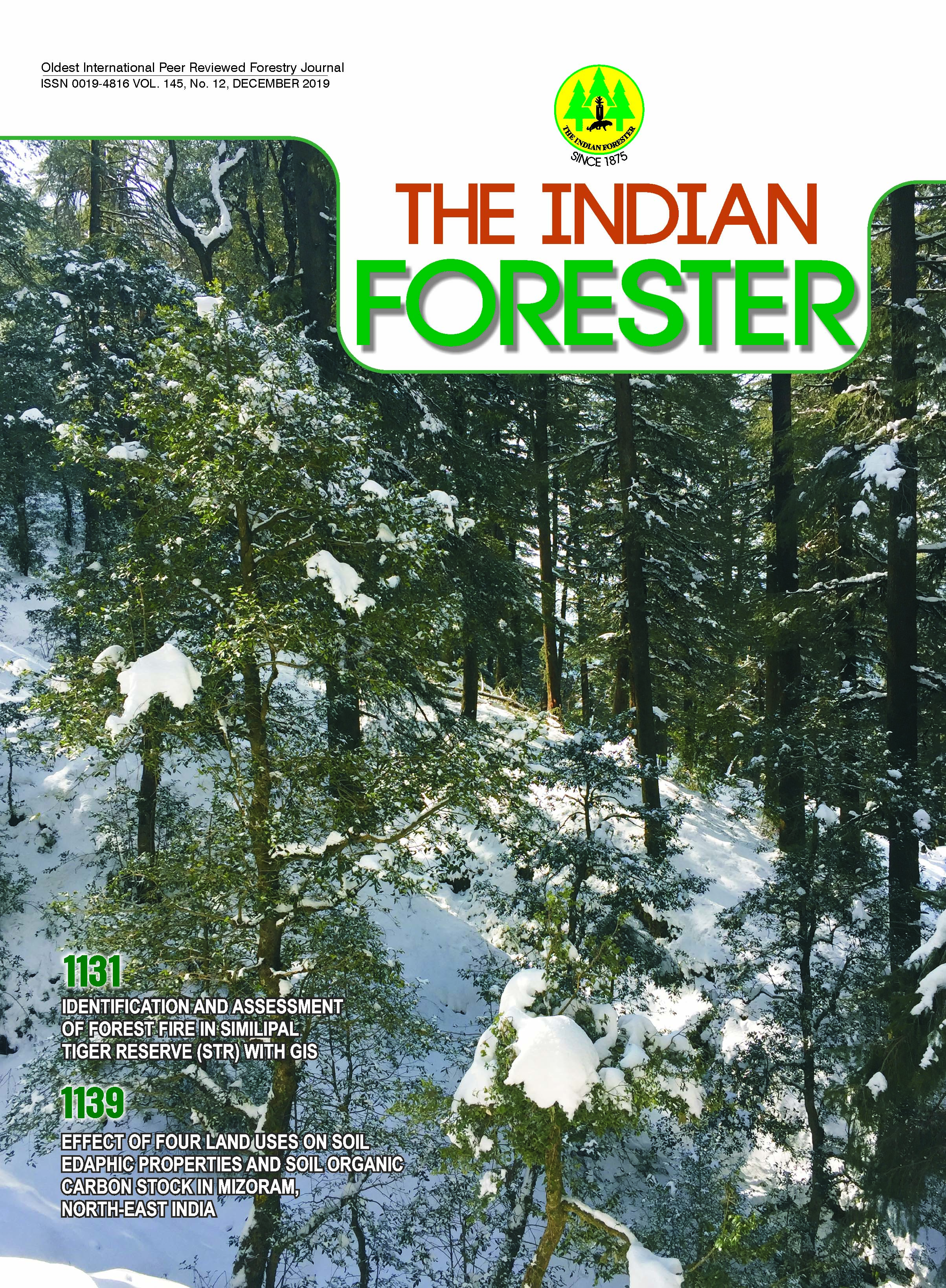Observation on the Phyto-Diversity of Sunderdunga Valley, Uttarakhand, Western Himalaya
DOI:
https://doi.org/10.36808/if/2019/v145i12/150641Keywords:
Phyto-Diversity, Inventory, Western Himalaya.Abstract
Despite numerous explorations and in-depth studies in the Western Himalaya on various themes, many areas remain under-explored. One such under explored area is Sundardhunga Valley, Bageshwar (Uttarakhand) in Western Himalaya. A detailed floristic survey was conducted during 2017-18. A total of 520 species of angiosperms (286 genera and 92 families), 45 species of Pteridophytes (24 genera and 15 families) and 7 species of Gymnosperms (5 genera and 4 families) were recorded within about 75km2 vegetated area above 2000 m elevations. The dominant families were Asteraceae (47), Rosaceae (37), Poaceae (34), Ranunculaceae (20) and Polygonaceae (19) among angiosperms and Polypodiaceae (12) and Aspleniaceae (5) among the ferns. Owing to difficult terrain and low accessibility to people and livestock during the growing season (June-September) the valley has luxuriant diversity.References
Dhar U., Rawal R.S. and Samant S.S. (1996). Structural diversity and representativeness of forest vegetation in a protected area of Kumaun Himalaya, India: implication for conservation, Biodiversity and Conservation, 6: 1045-1062.
Khullar S.P. (1997). An illustrated fern flora ofWestern Himalaya vol.1 & 2, International book distributors, Dehradun, pp 1100.
Naithani B.D. (1984). Flora of Chamoli Vol. 1 &2. Botanical survey of India, Dehradun.
Negi V.S., Maikhuri R.K. and Rawat L.S. (2004). Biodiversity Conservation, 0:545-559. IUCN 2004 IUCN Red List of Threatened Species. www.iucnredlist.org
Osmaston A.E. (1927). A Forest Flora for Kumaon. Allahabad: Government Press. pp 600.
Rai I.D, Singh G. and Rawat G.S. (2017). Flora of Kedarnath Wildlife Sanctuary, Western Himalaya: A Field Guide, Bishen Singh Mahendra Pal Singh, Dehradun pp 393.
Rawal R.S., Bankoti N.S. and Pangtey Y.P.S. (1994). Broad community identification of high altitude forest vegetation in Pindari region of kumaun (Central Himalaya), Proc. Inidian Nat. Acad. B 60(6): 553-556.
Rawat B., Sekhar K.C. and Gairola S. (2013). Ethnobotanical plants of Sunderdhunga valley, Western Himalaya, India traditional use, current status and future prospect scenario, Indian Forester, 139(1): 61-68.
Rikhari H.C., Chandra R. and Singh S.P. (1989). Patterns of species distribution and community along a moisture gradient within and Oak Zone of Kumaun Himalaya, Proc. Indian Nat. Acad. B 55: 431-438.
Sekhar K.C., and Rawat B. (2011). Diversity, utilization and conservation of ethnomedicinal plants in Devikund - A high altitude sacred wetland of Indian Himalaya, Medicinal Plants, 3(2): 105-112.
Singh J.S. and Singh S.P. (1987). Forest Vegetation of the Himalaya, Bot. Rev., 53: 80-192.
Tewari J.C. and Singh S.P. (1985). Analysis of woody vegetation in a mixed oak forest of Kumaun Himalaya; Proc. Indian Natl. Sci. Acad. BSI 332-347.
Upreti N., Tewari J.C. and Singh S.P. (1985). The oak forests of the Kumaun Himalaya (India) 1: Composition, diversity and regeneration, Mountain Research and Development, 5(2): 163-174.
Ved D.K. (2003). Conservation Assessment & Management Prioritization for the Medicinal Plants of J&K, Himanchal and Uttaranchal. Proc. of a Regional Workshop held at Shimla during May 22-25, 2003.
Downloads
Downloads
Published
How to Cite
Issue
Section
License
Unless otherwise stated, copyright or similar rights in all materials presented on the site, including graphical images, are owned by Indian Forester.





